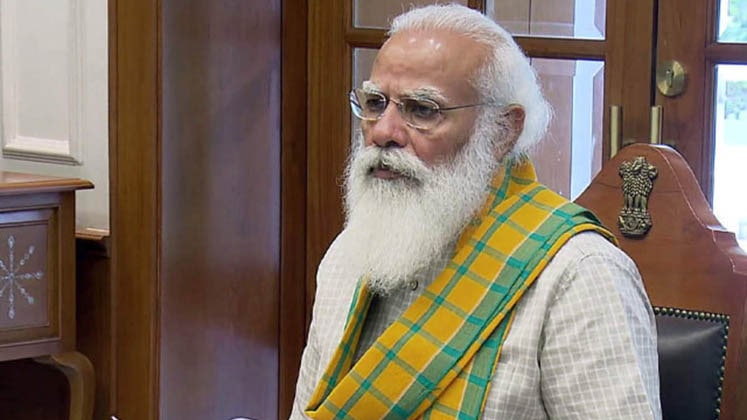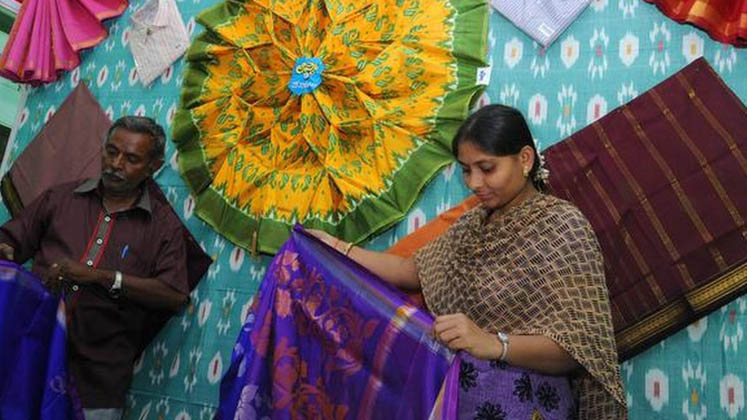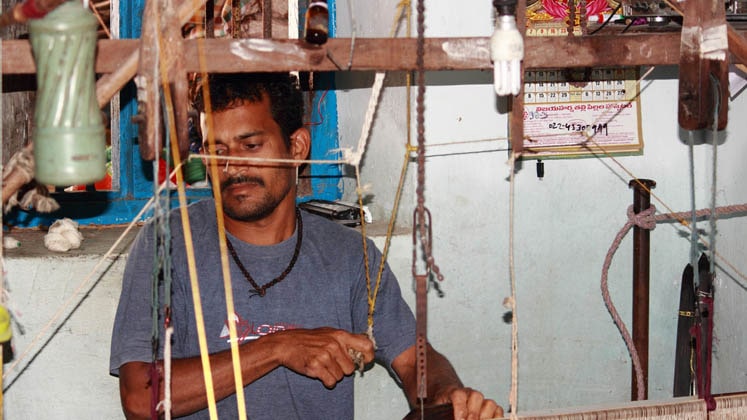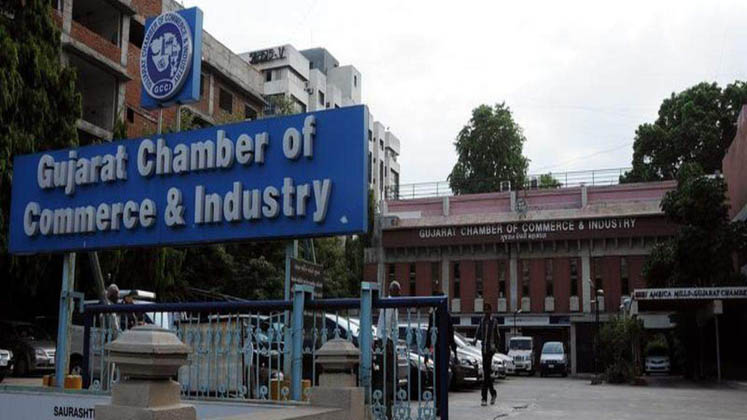
There are lakhs of cooperative societies in India today – be it related to agriculture, finance or textiles – and while their primary intent was to contribute significantly to country’s development, the question that still remains is whether it has actually been able to do so. A cooperative society is, to put simply, a voluntary association of individuals having common needs to achieve common economic interest. When these societies first came up in the country, the sole objective was to serve the interests of the poorer sections of society through the principle of self-help and mutual help. Sadly, it hasn’t actually worked that way!
Yes, alongside the state and the market, cooperatives have occasionally played a key role in India’s development, but rarely has it been in the focus of any policy planning. However, the Government of India now under the leadership of PM Narendra Modi seems to have some plans up its sleeve, including creation of a new Union Ministry to oversee that the cooperative sector will redeem from negligence. How successfully the Government implements it remains to be seen!
Formation of this Ministry wasn’t all that sudden! It was first hinted during Nirmala Sitharaman’s Budget speech this year, where she had said that the Modi Government is committed to the growth of multi-state cooperatives and will provide all support to them. She added, “To further streamline the ease of doing business for cooperatives, I propose to set up a separate administrative structure for them.”
Now the question is why a separate Ministry? Importantly, it is to realise the PM’s vision of prosperity through cooperation (Sahkar se Samriddhi). Besides, it will help streamline processes for ‘ease of doing businesses’ for cooperatives and develop multi-state cooperatives. Additionally, the Ministry will provide a separate administrative and legal framework for strengthening the cooperative movement in India.
But, many critics also fear that this Ministry is purposefully created to concentrate even more powers in the hands of the Centre. That’s sadly been the case earlier also and that probably has also been a reason why the cooperative societies, especially textile-related, haven’t been so successful this far.
Cooperatives, in our country, are dominant in agriculture, credit and marketing, but not limited to those. Some are big! IFFCO, which, reportedly, ranks first amongst top 300 cooperatives of the world, has around one-third of the market share in fertilisers. In milk, cotton, handlooms, housing, edible oils, sugar and fisheries, they are formidable.
Notably, the legal architecture of the sector began evolving since 1904 under colonial rule, and back in 2002, the Multi State Cooperative Societies Act was passed, which took into account the challenges arising out of liberalisation. Considering the fact that cooperatives fall in the State list of the Constitution, the Centre will have to innovate to provide legal sanctity for the new Ministry. That’s where probably this separate Ministry could help marshal the diffused capacity of the sector. However, this move could backfire in a big way if the intent is to appropriate the political capital of the sector, which is significant.
Cooperatives are not meant to operate by the market logic of maximising profits, but to share the benefits to all stakeholders equitably. The sector has over the years become more of an instrument of patronage and pilferage. In some states, mismanagement and corruption have completely destroyed the sector. But one cannot deny that cooperatives have made important contributions in poverty alleviation, food security, management of natural resources and the environment – though not uniformly across India. Maharashtra, Kerala, Karnataka and Gujarat, however, have been some states that have continued to reap rich dividends from the textile cooperative movement.
Also Read: Linen steals the limelight
Karnataka and Andhra Pradesh continue to initiate measures
The Karnataka Government has embarked on a plan to transform the handloom industry into an organised profession. As part of this exercise, it plans to revive the State-owned Karnataka Handloom Development Corporation (KHDC) and Cauvery Handlooms. The initiative is expected to benefit around 80,000 handloom weavers and 600 handloom cooperative societies in the state. Substantiating on the same, R. Raju, Karnataka Commissioner for Textile Development, avers “227 cotton, 88 silk and over 50 woolen cooperative societies are currently operational in the state.” Also, there are 138 wool handloom cooperative societies and 90 powerloom societies in the state.
Karnataka Government has been implementing various developmental programmes for weavers in the State. The Government recently issued orders for waiver of Rs. 50,000 outstanding loans as on 30 June 2017, borrowed by the weavers for weaving purpose from various weavers’ cooperative societies, district central cooperative banks, urban cooperative banks and non-agricultural credit cooperative societies in the state.
Besides, the State Government is extending interest subsidy on the loans borrowed up to Rs. 2 lakhs at 1 per cent interest and Rs. 2 to 5 lakhs at 3 per cent interest, borrowed by weavers from weavers’ cooperative societies, district central cooperative banks, urban cooperative banks and non-agricultural credit cooperative societies. Additionally, loans provided to cooperative spinning mills in Karnataka were converted into equity by waiving of interest and penal interest on the loans borrowed by the mills.
Karnataka’s neighbour, Andhra Pradesh has 1,282 weavers’ cooperative societies in the state, which comprise cotton (896), silk (325) and wool (61). Besides, there are 166 tailor societies and 193 powerloom and other societies in the state.
The most notable in the state is the Andhra Pradesh State Handloom Weavers Cooperative Society Ltd. (APCO), which is the APEX Handloom Weavers Cooperative Society of Andhra Pradesh. The Society was registered in 1976 and since then has expanded with 109 branches.
Earlier this year, in a bid to put APCO on the road of profit making, the management decided to set up a handloom processing centre either at Nellore or Guntur at an estimated cost of Rs. 10 crore. Disclosing this at a high-level review meeting in January 2021, Chillapalle Venkata Naga Mohan Rao, Chairman, APCO emphasised on the need to modernise handlooms so has to be in sync with changing times to attract more customers. He also said there are plans to set up a silk processing unit in Vizag.

Tamil Nadu and Kerala aren’t far behind in making cooperatives work
In Tamil Nadu, today, out of 4.27 lakh handlooms, 2.83 lakh handlooms are in cooperative fold producing around Rs. 450 crore worth of handloom cloth. All these weavers in the state have been organised through 1,354 handloom weavers’ cooperative societies. Since all these societies were scattered and were unable to market their handloom products individually, formation of a state-level apex-marketing cooperative was considered necessary to market procured handloom products through the network of outlets in and outside of Tamil Nadu thus providing ensured marketing support.
It is only in this context, the Tamil Nadu Handloom Weavers’ Cooperative Society Limited, popularly known as ‘Cooptex’ was established in 1935. Besides, marketing handloom products, Cooptex also procures yarn from 14 cooperative spinning mills of the state and also from the National Handlooms Development Corporation (NHDC) to supply to member societies. Cooptex is the largest apex handloom weavers’ cooperative society in India that has been promoting handloom industry and works in the interest of cooperative weavers in a commercially viable way.
Some of its integral functions include supply of raw materials (yarn), organisation of production according to the needs and taste of market, procurement of stock from handloom weavers’ cooperative societies and marketing of those products through its effective network of shops throughout the country. Besides, it has also been offering technical and financial help to the weavers.

Kerala too hasn’t been far behind! The Kerala State Cooperative Textile Federation Limited (TEXFED) was established in 1992 with the aim to plan, advise, assist, coordinate and monitor and facilitate the organisation and working of the cooperative textile units in the state It’s been integrating all the segments of the textile industry in its fold, that is, from spinning to weaving, processing and garmenting.
Here it is important to mention that Kerala Handloom Workers Welfare Fund Board – a statutory body under the Government of Kerala – was constituted in 1989 as per provisions contained in the Kerala Handloom Workers Welfare Act, 1989 for the implementation of various welfare measures and for paying pension to the handloom workers and related workers of the state of Kerala. The board members are nominated by the Government of Kerala, with four regional offices at Kannur, Kozhikode, Ernakulam and Thiruvananthapuram and a head office at Kannur.
GCCI (Gujarat), Maharashtra and Uttarakhand too have their policies…
Moving from southern to eastern part of India, the Gujarat Chamber of Commerce and Industry (GCCI) in Gujarat has been relentlessly putting efforts to replicate the cooperative model of Amul in the textile sector so as to ensure all the stakeholders across the value chain get better monetary returns. GCCI has always been vocal about how the state has been exporting low value goods and importing costly value added products, and believes the Amul model will help ensure higher value addition within the state.
In spite of contributing nearly 33 per cent to India’s cotton production, Gujarat continues to lag in manufacturing value-added products like garments. Saurin Parikh, Honorary Secretary, GCCI, avers value addition can easily increase the earnings by about 10 times.

On similar lines, Maharashtra State Co-operative Textile Federation Ltd., an apex organisation of all cooperative textile units in Maharashtra, has been providing techno-commercial services to its members. The State Government, under its new textile policy for 2018-2023, has decided to privatise spinning mills and powerloom societies operated at present on cooperative basis by changing the clauses for the use of land, provided they are ready to return to the Government the equity, loan and interest thereupon.
Importantly, the new policy aims at generating 10 lakh jobs by 2023, and also attracting investments worth Rs. 36,000 crore. 136 societies and mills in the state had sought funds in the form of a share capital, out of which 66 are running, while a few others are under installation, a few are into liquidation, with 3 already closed. Maharashtra’s textile department funds cooperative cotton mills 45 per cent of share capital. Notably, 50 per cent is required to be raised in the open market whereas the rest is borne by the mill board.
The policy also offers several benefits, such as competitive power tariffs and increased capital subsidy, for minority categories, besides strengthening the knitting, garmenting and hosiery sector.
Uttarakhand, in the northern part of India, is working on an integrated development model that puts together all cooperatives in the state. The State Government has hired Synergy Consultant for the purpose. National Cooperative Development Corporation (NCDC) has been playing an important role in this, even as surveys on an unheard of scale in Uttarakhand’s each village and panchayat has been undertaken weighing up the strengths and weaknesses of each Primary Cooperative Society. The project seeks to unify almost all the economic activities of the state into an effective whole, which includes weaving and farming, amongst others.
ARTFED, the apex level society in Assam, has been putting efforts to search niche market and doing everything that can help deliver superior customer value. The Federation, at present, has given stress on sustaining and creating avenues of employment in handloom and handicraft sector, improving the socio-economic status of handloom weavers and artisans of Assam as well as the northeast region.
Besides, the Federation annually provides direct employment to more than about 1.5 lakh weavers and artisans of the state by procuring their products worth over Rs. 40-50 crore annually. There are efforts, but something still seems missing.
But, co-operative movement in India still isn’t as successful…
Co-operative movement in India somehow still lacks spontaneity in the sense that it has not been emanated from the people themselves. While there has been reluctance on the part of people to come forward and organise co-operatives on their own accord, many in the rural parts of the country are only interested in deriving benefits from cooperative societies and banks instead of contributing anything in return.
The cooperatives have resource constraints as their owned funds hardly make a sizeable portfolio of the working capital. With a weak owned fund base, the borrowings of the cooperatives from the central financing agency are considerably conditioned. This has stood in the way of adequately meeting the credit requirements of the existing as well as new members.
In many Indian states, owing to lack of organised functioning at Primary Agricultural Cooperative Societies, the rural poor have, almost always, succumbed at the hands of exploiting middlemen. Besides, over-dependence on Government funds has also hit these societies hard as amount of funds released by the Government have been uncertain. Limited funds, also at times, prevent the societies to undertake large-scale operations and therefore do not work in large scale industries.
Another important cause of cooperative societies not doing well has been inefficient managing committee in most of the cases. The members of the committee, almost always, lack skill, experience or qualification. Not having right people at right place also sometimes leads to swindling of funds, thereby leading to financial losses. And even when there are few good members, they lack motivation as there is very little link between effort and reward.
Importantly, many cooperative societies in India are subject to excessive Government regulations, which have severely impacted their autonomy and flexibility. It’s been the story for years now…
Findings from a case study
A study was recently done on Chendamangalam handloom cooperative society in Ernakulam district of Kerala, wherein the major focus was on financial problems faced by the handloom weavers in Chendamangalam handloom cooperative society as well as the schemes available from the Government.
One of the major findings from the study was that majority of the weavers were women between the age group of 40 and 50 years and had experience of more than 4 years. Sadly, most of them got their income weekly. Majority of these workers earned less than 5,000 Rs.
The study also made it clear that the income earned by the weavers was not sufficient to maintain their family or to meet their basic necessities. And to add to it, many had a monthly expenditure between Rs. 3,000 and Rs. 4,000. That says it all!
Another revelation was that weavers or workers did not have any problem with training as they all had several years of experience. Importantly, since all the weavers use traditional method for weaving they do not face any problem relating to modernised technology.
So, what can be done!
The case study also highlighted that in the current situation, with expenses to run a family increasing day by day, the first and foremost initiative is to increase the wage of the weavers by good numbers. Most importantly, to meet their expenses and pay off their loans, the workers need to get the wages without any delay from government. Considering workers do not have problems adopting technology, many of India’s garment cooperatives have been lately able to take advantage of IT to earn some recognition in the highly competitive global industry.
The study also distinctly presented that Government should properly implement existing schemes and ensure the weavers get all the benefits. Besides, Government needs to launch many more schemes that can help weavers financially. And that’s not all! The Government should also be pro-active to offer scholarships to the children of weavers for imparting them good education. NCDC has already been promoting cooperative textile programmes by providing financial assistance for the development of cotton ginning and spinning, weaving, coir, jute and sericulture activities, but is that enough?
Despite regulatory oversight by the RBI and states, there is considerable autonomy for the sector, which is often misused. The solution, as some experts believe, is not an overarching Ministry. The premise of a cooperative is that decisions are made by those affected by them. Transparency is the key! In this regard, the new Ministry could be the catalyst, but, importantly, it must not position itself as a command authority. There are initiatives and there are efforts, but a lot of work still needs to be done. The cooperatives are struggling to survive amidst all challenges – it’s a long road ahead.






